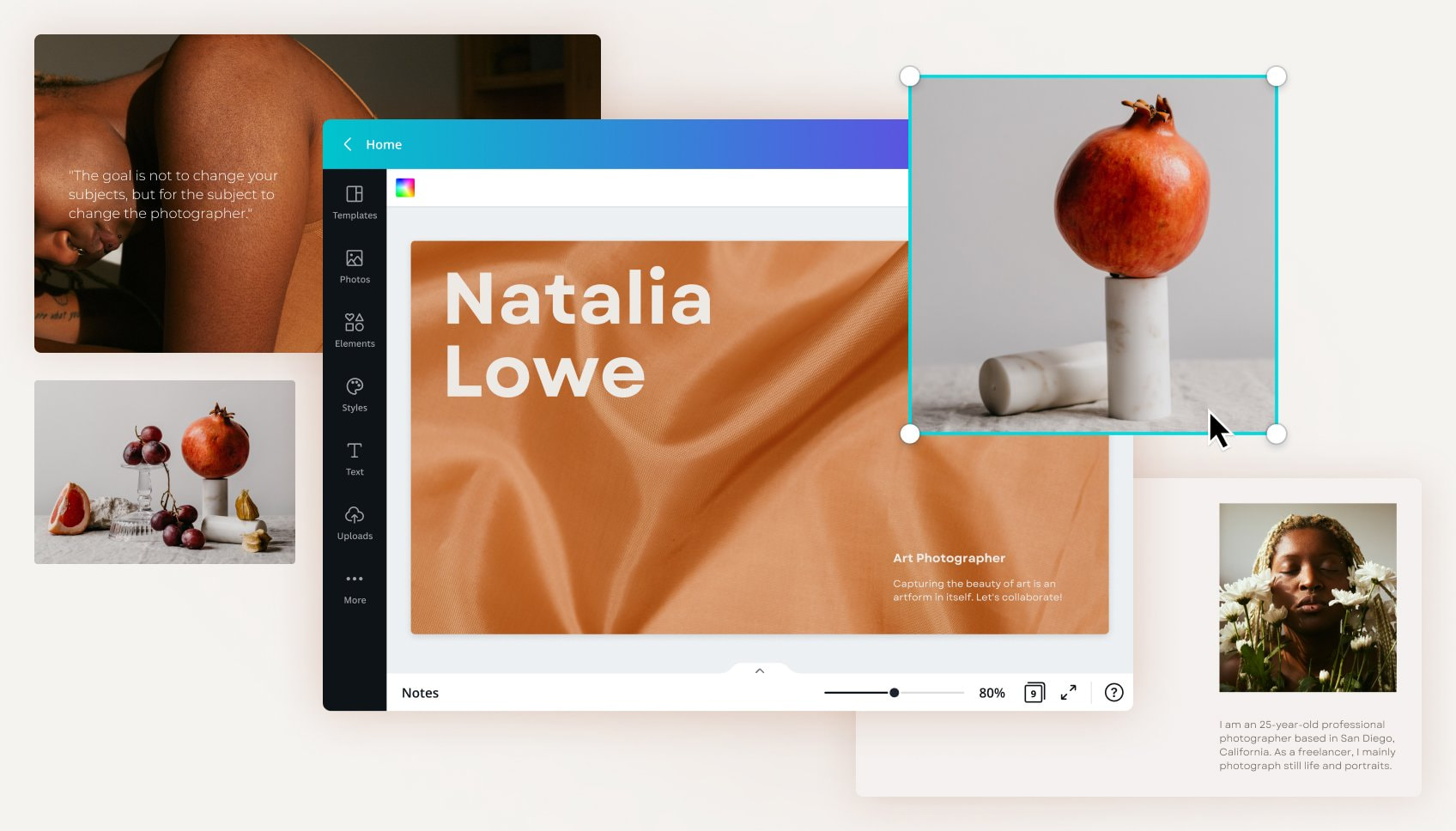Creating a portfolio on iStock is an essential step for creatives looking to showcase their work and reach a global audience. iStock is a well-established platform that allows photographers, illustrators, and videographers to sell their creative content. This guide will break down the benefits of using iStock and provide you with the necessary steps to register and start building your portfolio effectively.
Understanding iStock and Its Benefits for Creatives

iStock is a leading marketplace for stock images, videos, and illustrations that connects creatives with businesses and individuals in need of visual content. By creating a portfolio on iStock, you can benefit in several ways:
- Global Exposure: Your work will be visible to a vast audience, from small startups to major corporations.
- Passive Income: Selling your creative material can generate a steady stream of revenue over time, as your portfolio attracts purchases.
- Professional Recognition: Association with a renowned platform can enhance your credibility and portfolio visibility.
- Community Support: Being part of iStock’s creative community allows you to connect with other artists, enhancing collaboration opportunities.
- Insights and Analytics: iStock provides tools to track your sales, audience engagement, and trends, helping you to refine your offerings.
Getting Started with iStock Registration

To begin your journey on iStock, you first need to register. Follow these steps:
- Visit the iStock website and click on the ‘Sign Up’ button.
- Fill in the required personal information, including your name, email, and password.
- Agree to the iStock terms and conditions and privacy policy.
- Verify your email address through the confirmation link sent to your inbox.
- Once registered, complete your profile by adding relevant details and portfolio preferences.
After registration, you can start uploading your work and set the stage for your creative journey on iStock.
Choosing the Right Content to Include in Your Portfolio

Creating a standout portfolio on iStock is all about showcasing your best work. But how do you decide which pieces to include? Here are some tips to help you choose the right content:
- Diversity is Key: Display a range of styles and subjects to appeal to a broader audience. Think about different themes such as landscapes, portraits, and still life. Variety can showcase your versatility as a creator.
- Quality Over Quantity: It might be tempting to include every piece you’ve ever made, but it’s crucial to curate your work. Only include your highest quality images—those that are sharp, well-composed, and effectively convey your artistic vision.
- Stay Relevant: Consider current trends and what buyers are looking for. Research popular topics or seasonal demands that could influence the types of images you choose to feature.
- Highlight Your Best Sellers: If you have previous work that sold well on other platforms, feature those pieces. They are likely to resonate with iStock buyers too.
- Consistency Matters: Aim for a cohesive look throughout your portfolio. This doesn’t mean all your images must look the same, but there should be a consistent quality and style that ties them together.
By focusing on these aspects, you can create a portfolio that not only showcases your talent but also resonates with potential buyers on iStock!
Best Practices for Uploading Images and Files

Now that you’ve curated an impressive collection of content, it’s time to upload your images to iStock. Here are some best practices to ensure your uploads go smoothly and your files meet iStock’s standards:
- File Format: Use high-quality JPEG or TIFF files. JPEGs are the most common, but ensure they are saved at the highest quality possible to maintain sharpness and detail.
- Image Resolution: Aim for a minimum resolution of 300 DPI (dots per inch) for best quality. Higher resolution images generally perform better in stock photography.
- Keywording: Take the time to add relevant keywords when uploading your images. This enhances searchability, allowing buyers to quickly find your work. Use specific and descriptive words related to your images.
- Titles and Descriptions: Write clear, informative titles and descriptions. This information helps potential buyers understand the context, meaning, and use of your images.
- Model and Property Releases: If you’re featuring recognizable people or private properties, ensure you have the appropriate releases to avoid legal issues.
Following these best practices can help ensure your images reach a wider audience and stand out in the competitive marketplace of iStock! Happy uploading!
Optimizing Your Portfolio for Maximum Visibility
Creating a stunning portfolio on iStock is just the first step; the next crucial phase is optimizing it for maximum visibility. After all, you want your work to be seen and appreciated, right? Here are some essential tips to help you shine:
- Use Relevant Keywords: Incorporate keywords that potential buyers might use when searching for images. Think like your target audience and consider what terms they would likely input.
- Write Compelling Descriptions: Every image should have a detailed and engaging description. This not only helps with SEO but also entices buyers by giving them context.
- Choose the Right Categories and Tags: Ensure your images are categorized correctly. iStock allows you to tag images, so use relevant tags to increase the chances of appearing in search results.
- Update Regularly: Keep your portfolio fresh by adding new images regularly. An active portfolio signals to both buyers and the platform that you’re a serious contributor.
- Analyze Performance: Use iStock’s analytics tools to see which images are performing well. This insight can help you tailor future uploads to trends and buyer preferences.
Implementing these strategies can substantially increase your visibility on the platform. It’s all about connecting with your audience—make sure they can find you easily!
Promoting Your iStock Portfolio on Social Media
Once your portfolio is optimized, it’s time to take it to the next level by promoting it on social media. Social platforms offer a wealth of opportunities to showcase your work and reach a wider audience. Here’s how to effectively promote your iStock portfolio:
- Choose the Right Platforms: Focus on platforms like Instagram and Pinterest, which are visually-driven and perfect for showcasing your images. Facebook groups and LinkedIn can also be valuable for networking and promotion.
- Create Engaging Posts: Share eye-catching images from your iStock portfolio with engaging captions. Consider telling a story about the image or explaining your creative process to draw in your audience.
- Use Hashtags Wisely: Hashtags can greatly expand your reach. Use popular and relevant hashtags to help potential buyers discover your work. Examples include StockPhotography, iStock, and specific tags related to your images.
- Engage with Your Audience: Respond to comments, engage with other creators, and participate in relevant discussions. Building connections can lead to more visibility and potential sales.
- Promotional Offers: Occasionally, consider creating promotional content, like offering discounts on your portfolio for a limited time or running contests to encourage shares.
By actively promoting your iStock portfolio on social media, you’ll not only attract potential customers but also build a community around your work. It’s about creating visibility and connection—so get sharing!
Monitoring Your Success and Analyzing Performance Metrics
Once you’ve started uploading your work to iStock, it’s time to keep a close eye on how your portfolio is performing. Monitoring your success is key to understanding what works and what doesn’t, which in turn helps you tailor your future submissions to meet market demands. Here are some essential metrics to track:
- Sales Data: Check how many downloads your images are getting. This is a direct indicator of your portfolio’s appeal.
- View Counts: Look at how many times your images are being viewed. A high view count with low downloads could indicate that your images are getting noticed but not compelling enough to be purchased.
- Keywords Performance: Analyze which keywords draw traffic to your images. By adjusting your tags based on performance, you can boost visibility.
- Customer Feedback: Pay attention to any comments or ratings your works receive. This direct feedback can provide valuable insights into what buyers prefer.
- Trends Over Time: Track your performance over weeks and months. Seasonal trends can affect sales, so being aware can help you plan your uploads.
iStock provides tools in your contributor dashboard to help you gather these metrics. Make sure to check in regularly to see how your portfolio evolves, and don’t hesitate to pivot your strategy based on the data you find!
Tips for Continuing to Grow Your Portfolio
Growing your portfolio on iStock is not a one-time task; it’s an ongoing journey! Here are some valuable tips that can help ensure that your portfolio remains fresh and appealing:
- Keep Learning: Stay updated on photography trends and techniques. Websites, webinars, and workshops can be invaluable resources to refine your craft.
- Expand Your Subjects: While it’s great to have a niche, experimenting with new subjects can attract a broader audience. Think beyond traditional stock images!
- Regular Updates: Upload consistently. Regularly adding new content keeps your portfolio active and can improve your visibility on the platform.
- Engage with the Community: Connect with other contributors. Networking can provide insights and create opportunities for collaboration, which can lead to unique content.
- Review and Revise: Don’t be afraid to reassess older images. If certain images aren’t performing well, consider revisiting their keywords or even replacing them with better work.
Remember, building a successful iStock portfolio takes time and dedication. By taking these proactive steps, you’ll set yourself on a path to not only grow your portfolio but also enhance your skills as a visual creator.
Common Mistakes to Avoid When Creating Your iStock Portfolio
Creating an impressive portfolio on iStock is essential for standing out in the competitive stock imagery market. However, many new contributors often make common mistakes that can hinder their success. Here are some pitfalls to avoid:
- Lack of Research: Before uploading your work, explore existing portfolios on iStock. Understand what types of images sell well and what is currently trending.
- Low-Quality Images: Always ensure that your images are high resolution and free from noise or artifacts. Users are looking for quality, and low-resolution images can damage your reputation.
- Ignoring Keywords: Keywords are crucial for discoverability. Failing to use relevant and specific keywords can limit the visibility of your portfolio.
- Overlooking Model Releases: If your images feature identifiable people, ensure you have obtained proper model releases. Without them, your images may be rejected.
- Neglecting Consistency: A cohesive style can help establish your brand. Inconsistent styles or subjects may confuse potential buyers and dilute your portfolio’s theme.
- Skipping Metadata: Provide detailed metadata for your images. This includes titles, descriptions, and appropriate tags, which help improve your images’ searchability.
- Not Engaging with Community: Building relationships with other contributors can help you learn from their experiences. Ignoring this aspect limits your potential for growth.
In conclusion, by avoiding these common mistakes, you can create a more effective iStock portfolio that showcases your best work and attracts potential buyers, increasing your chances for success in the competitive stock market.


